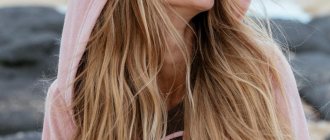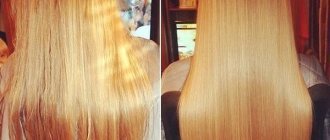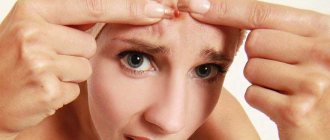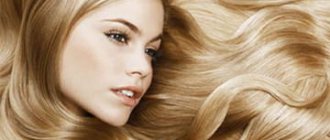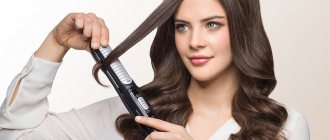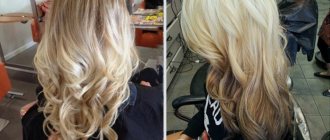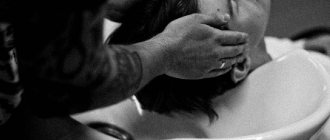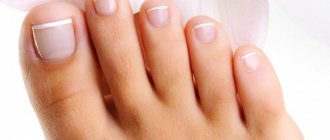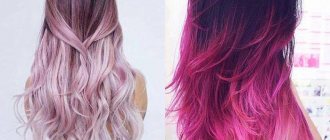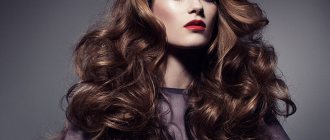Many women think that body hair removal is a trend of the new times, and was invented by modern Wellness companies in order to earn as much money as possible, but this is not at all the case.
Hair on a woman's body was considered bad manners already thousands of years ago: in Egypt, Rome, and Greece it was considered indecent to have hair even on the pubic area, not to mention other areas of the body - although this did not seem to apply to men - and women came up with many ways to remove this hair. Many of the methods used then are still used today in an improved form - for example, waxing or sugaring, but they are not so easy to do at home, and they are not cheap in the salon. It is imperative to visit salons and take care of yourself, and then unwanted hair on the face and body will gradually become almost invisible, and then stop growing altogether, but what if you don’t have enough time or money to go to salons yet?
As an alternative method, you can use hair bleaching with hydrogen peroxide: the hair will not disappear, but will become unnoticeable for a while, and besides, this procedure will not hit your wallet in any way - in a pharmacy a bottle of 3% hydrogen peroxide costs from 10 to 25 rubles.
Why I love my robot vacuum cleaner so much: sharing my own experience
Unwanted hairs can grow everywhere, and if they attract less attention on the arms and legs (everyone has them there - that’s how nature intended), then hair on a woman’s face, stomach or other part of the body does not always look attractive - although it happens the other way around. However, we will talk about how to lighten those hairs that are really “out of place” - for example, facial hair.
How to lighten hair on the arms and other parts of the body: peroxide-based products
To lighten body hair, you will also need attention and patience: a lot depends on the structure of the hair - for thin and weak hairs, a 4-8% concentration of the solution is enough, for thick and hard hairs - 10-12%, for hair of medium thickness, the concentration of the solution should also be be average. A more concentrated solution works faster, so attention is required here too.
To 50 g of the prepared peroxide solution add 5 drops of ammonia - no more, otherwise the hair color may turn red, and immediately apply the solution to the hairs. To prepare the solution, you need to use a glass or ceramic container, but in no case a metal one - in it the chemical reaction will occur instantly, and there will be no point in applying the mixture to your hair.
The easiest way to bleach hair on your arms and face is with hydrogen peroxide. It is enough to wipe problem areas with a pharmaceutical product a couple of times a week, so that after five to ten sessions the hair becomes light and almost invisible on the skin. But peroxide may not cope with thick or very dark “vegetation”. You will have to strengthen it with other components.
With soda and ammonia
You will need:
- a tablespoon of hydrogen peroxide,
- the same amount of warm water
- a teaspoon of ammonia,
- the same amount of baking soda.
Mode of application
- Mix all ingredients.
- Distribute over skin.
- Depending on the color and thickness of the hair, the procedure time can vary from 25 to 30 minutes.
- Rinse off with cold water.
After applying the composition, a tingling sensation may be felt. If discomfort persists for more than five minutes or begins to intensify, rinse immediately.
With shaving foam
You will need:
- hydrogen peroxide,
- the same amount of shaving foam.
Mode of application
- Mix the ingredients until smooth.
- Apply the product to problem areas.
- After complete drying, wash off the composition.
With lanolin and Vaseline
You will need:
- ten drops of hydrogen peroxide,
- three drops of ammonia,
- a teaspoon of shampoo (preferably sulfate-free),
- half a teaspoon of Vaseline,
- the same amount of lanolin.
Mode of application
- Mix all ingredients until smooth.
- Apply the resulting whitening cream to the problem area.
- Wait a quarter of an hour for the product to dry on the skin.
- Rinse off with warm water.
This rich cream helps to lighten facial hair safely and effectively. For hands and feet, Vaseline and lanolin are optional. These components can be proportionally replaced with liquid soap or shampoo.
With toothpaste
You will need:
- a couple of tablespoons of hydrogen peroxide,
- the same amount of toothpaste.
Mode of application
- Mix the ingredients.
- Apply to areas with excess “vegetation”.
- After a quarter of an hour, remove with a sponge and rinse with water.
Judging by the reviews, whitening paste copes best with the task of lightening. Choose products without menthol. This component may increase itching and burning.
With hydroperite
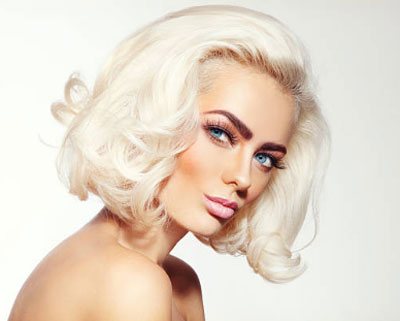
You will need:
- three tablets of hydroperite,
- a tablespoon of water (preferably boiled or distilled),
- half a teaspoon of ammonia,
- a couple of tablespoons of shaving foam.
Mode of application
- Crush the tablets into powder and mix with the remaining ingredients.
- When the hydroperite particles are completely dissolved, apply the composition to clean, dry skin.
- After a quarter of an hour, wash off.
Hydroperite are tablets consisting of hydrogen peroxide and urea. The last component enhances the lightening effect and promotes hair thinning.
Benefits of Foam Home Remedies
You can find many beauty recipes based on shaving products on the Internet. It can be used even for thin, delicate and highly sensitive skin. So, what is the usefulness of the component for a woman’s epidermis:
- has a softening effect;
- has a gentle effect on the cover during deep cleaning of dirt;
- eliminates the problem of enlarged pores by narrowing them;
- gives an even complexion to the face, removing excessive pigmentation and highly visible freckles;
- disinfects, killing all microorganisms on the surface of the cover;
- dries and relieves various types of inflammation. Eliminating acne, blackheads;
- regulates and replenishes the lack of moisture in skin cells;
- removes harmful and toxic substances from the skin;
- has a tightening effect, eliminates fine wrinkles.
Also, before you start using shaving foam, it is important to familiarize yourself with the contraindications:
- individual intolerance to components;
- in the presence of active acne or ulcers;
- allergic reaction.
Many girls, before using a cosmetic product, ask themselves the following question: “Which foam is best to buy?” The answer is quite simple - any. But there are several important rules that you should definitely read:
- For normal, dry and sensitive types, you need to replace simple foam with shaving gel. It contains fewer aggressive components.
- To avoid skin burns, it is not recommended to use the product in its pure form. It is better when combined with other ingredients: oatmeal, oils, sour cream, cottage cheese, etc.
- Before applying the finished home remedy, you need to steam the cover over hot water or a decoction of medicinal herbs for a quarter of an hour.
- It is impossible to withstand more than the specified time in order to prevent side effects and burns on the skin.
- Remove the face mask with shaving foam, first with warm water and then with cool water. This is required in order to close the pores.
- Shaving gel and foam can be used as a simple cleansing product.
Bleaching of hair on legs
If a woman has hair growing above her upper lip or on her chin, and even dark hair, this does not add to her good mood - this is where hydrogen peroxide helps. This is not difficult: you just need to moisten a cotton swab in a 3% solution of hydrogen peroxide, and gently wipe the area with hairs for 5 minutes a day - after a few days the hairs will lighten, and then begin to break and become almost invisible.
There are other options using peroxide. You can make a bleaching mixture from shaving foam - it will be even better for the skin: the foam is mixed with peroxide 1:1, and applied to the problem area for 20 minutes, then washed off, and a nourishing cream is applied to the skin.
You can also add ammonia to the mixture - the hair will lighten faster. You need ½ tsp of alcohol, 40 g of peroxide, and shaving cream to get a homogeneous mixture. This composition is kept on the problem area for about 10 minutes, then washed off and lubricated with nourishing cream.
Another way is to use perhydrol ointment prepared at home. Perhydrol is the name of an aqueous 30% solution of hydrogen peroxide - you only need 2 g, and also Vaseline - 8 g, lanolin - 12 g, ammonia - just one drop, and a little shampoo. The ingredients are mixed, whipped until smooth - the mixture should not flow, and applied to the area with hair. When the mixture is completely dry, it is washed off with warm water.
In addition to ammonia, peroxide is also mixed with other substances - soda, baby soap, ammonia. However, these methods are more likely to cause allergic reactions.
Security measures
To avoid harming yourself, you must follow some safety precautions:
- Choose high-quality shaving foam for washing, with a minimum content of chemicals;
- The massage brush must be perfectly clean; a dirty brush increases the risk of infection;
- the mask is applied only to the chin, forehead and nose; getting it on the cheeks and cheekbones can cause irritation;
- to relieve inflammation, cleaned areas should be wiped with chamomile decoction or cream;
- You need to apply gentle pressure with the brush during the massage to avoid damage;
- For girls with sensitive skin, it is better not to use soda and shaving foam on their faces;
- You need to wash your face thoroughly to rinse off the scrub well;
- After the procedure, it is better to stay at home; microscopic abrasions will remain on the skin, so it is not advisable to go out into the bright sun or severe frost.
Advice! After a sunburn, foam helps soothe the skin.
It can also be used to relieve itching from insect bites. Washing with shaving foam is the easiest way to clean out the pores on your face. But before the procedure, do not forget to consult your dermatologist .
For experience using shaving foam to combat blackheads, watch the video:
A selection of folk recipes
But besides chemicals, nature itself can perfectly lighten the hairs on your legs and arms. There are methods that have proven themselves in distant years, when no one even knew about chemistry. This:
- For those who have thin hairs and sensitive skin, there is the opportunity to use a folk remedy - chamomile. Brew dry chamomile tightly to form a dark infusion and rub it on the skin of your hands and feet. You can even keep it in this solution for a few minutes.
- Mix four tablespoons of cinnamon and half a glass of honey. Mix everything thoroughly and apply the resulting sweet mixture to the skin of your hands and feet. Leave for an hour or longer. The longer the mixture lasts, the better the effect. Rinse with water.
- Mix equal parts of lemon juice, apple cider vinegar and chamomile infusion. After thoroughly mixing all components, apply to problem areas. The effect is amazing. It will be noticeable immediately.
The main thing is to choose a method that suits you.
When looking for ways to bleach hair on your arms at home, don’t ignore folk recipes. Natural remedies are much gentler than peroxide or paint. Of course, you will have to wait longer for the effect, but there will be much less harm to the skin.
Peculiarities. You can lighten the hair on your arms with lemon if it is soft enough and not too dark. The main condition for using the method is the absence of allergies to citrus fruits, since lemon is the only ingredient in the recipe.
Mode of application
- Squeeze the juice from the lemon and pour it into a container with a lid to store in the refrigerator between uses.
- Using a cotton pad or brush, distribute the liquid over problem areas.
- Expose your hands to the sun and soak the product for half an hour. If the weather is cloudy, or you are doing lightening in the cold season, the duration of the session increases to an hour.
- As the liquid dries, repeat the treatment.
- Wash your skin with plenty of cold water.
If you want to lighten dark and coarse hair on your legs, lemon will not be enough. Add an equal amount of apple cider vinegar to the juice, and reduce the procedure time to 20 minutes.
Chamomile
Peculiarities. Chamomile will help you lighten your arm hair on your own. After just a week of daily procedures, you will notice that a couple of tones have gone away.
You will need:
- two tablespoons of dry chamomile,
- a glass of boiling water,
- a tablespoon of glycerin.
Mode of application
- Steam chamomile in boiling water for three hours.
- Strain the finished chamomile infusion and mix with glycerin.
- Distribute the product over the skin and leave for about an hour.
- Rinse off with cold or warm water.
Not only chamomile, but also calendula has pronounced lightening properties. To enhance the effect of the infusion, adjust the recipe by adding a spoonful of dry “marigolds”.
Fuller's clay
Peculiarities. Fuller's clay is a greenish-brown powder with a high content of copper and iron. The product is notable for its disinfecting and regenerating properties, which allows it to be used on problem skin.
You will need:
- teaspoon of clay,
- the same amount of water
- five to six drops of ammonia.
Mode of application
- Mix all ingredients to a paste. If the mass is too thick, add more water, and if liquid, add clay.
- Distribute the mixture over cleansed skin and leave for ten minutes.
- Wipe off the dried clay with a damp sponge and rinse the skin under running water.
Honey and cinnamon
Peculiarities. Both honey and cinnamon have lightening properties. Together they enhance each other's effects. To achieve results, you will need five to ten treatments at intervals of one to two days.
You will need:
- half a glass of honey,
- three tablespoons of cinnamon,
- a tablespoon of hair conditioner or hand cream.
Mode of application
- Mix cream, cinnamon and honey until smooth.
- Distribute the mixture evenly over the skin so that it completely covers the hair.
- After half an hour, wash off.
Before bleaching hair on your legs, arms, or face, make sure you are not allergic to any of the ingredients in the product. Apply the mixture to your wrist and wait ten minutes. Itching, burning or redness will be a contraindication to using the product.
Lightening with paint
There are chemical compounds that will help make unwanted hair on the body lighter and almost invisible. This:
- You can use hydroperite, which is available in tablets. To carry out the procedure, you first need to make a solution. Grind the tablet and dilute it in a tablespoon of water. After this, add a spoonful of ten percent ammonia. To make the mixture easier on the skin, you can add a little liquid soap. The resulting foam is applied to the skin and left for a quarter of an hour. After this, it is necessary to thoroughly rinse the treated area with cold water. To avoid dryness, it doesn't hurt to apply a moisturizer.
- In addition, a large number of products are currently appearing on the shelves that will help make the hair on your arms and legs lighter. They contain an active substance and a conditioner. Such products are quite safe, but it is not always possible to purchase them.
- Another lightening option is hydrogen peroxide. There is absolutely nothing complicated here. All you need is hydrogen peroxide and cotton wool. Apply the product to the skin using a cotton pad for five minutes. After that, rinse the areas treated with peroxide thoroughly.
- Dilute peroxide and warm water in equal parts. Then combine 50 ml of the resulting solution with two ampoules of ammonia. A teaspoon of soda is also added there. The mixture should be prepared in glass or porcelain containers. Apply to the treated area and leave for an hour. Then rinse thoroughly with water.
- Fuller's clay will be a good helper in lightening the hairs on your legs and arms. You need to take a couple of teaspoons and add to it a teaspoon of twenty percent hydrogen peroxide plus six drops of ammonia. Mix thoroughly and apply the mixture to the skin. After ten minutes, rinse with water.
- You can resort to regular hair dye. Choose a blonde color. Mix all the ingredients and apply the resulting mixture to your feet and hands. Thus, the hairs are lightened by six tones at once. But before carrying out the procedure, you should check your skin for possible allergies. To do this, apply a drop of the composition to the bend of your elbow and wait for ten minutes. If the allergic reaction does not manifest itself in any way, then everything is in order.
Light hair dye can be used to bleach hair on the body. But such experiments carry the risk of simply burning the skin. Therefore, you need to adhere to three key rules.
- Preparation. Before mixing the oxidizer with the paint, dilute it with an equal amount of water.
- Time. The coloring composition should not be left on the skin for more than a quarter of an hour.
- Taboo. It is strictly forbidden to apply hair dye to the delicate skin of the face, armpits and bikini area.
If you have dark hair on your arms
Dark hair on the arms is also a problem for many women, and it is hardly worth removing it using mechanical methods: after this, it grows back and becomes even coarser and darker.
The composition is prepared in approximately the same way: you need to dilute the peroxide with warm water 1:1 in a glass glass, and then 50 ml of the resulting solution is mixed in another bowl - preferably porcelain - with ammonia (2 ampoules), and 1 tsp. soda First you need to check the mixture: apply a small drop of the mixture to the crook of your arm and wait about 10 minutes - if everything is fine, the skin does not itch or redden, you can lighten your hair, but try not to rub it into the skin.
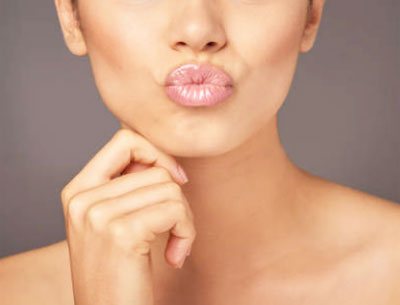
If hairs grow in areas where the skin is delicate, you must first lubricate the skin with a rich cream. You need to keep the mixture on your hair for about an hour, and then rinse it off with warm water. A slight burning or tingling sensation is normal, but if these sensations intensify, the mixture should be washed off immediately and look for other ways to bleach your hair. After the procedure, the skin in the areas treated with the solution may lighten, but after a few days it will return to its normal color.
Features of the use of hydrogen peroxide
When used regularly, hydrogen peroxide dries and thins the skin.
When a woman is happy that she has removed her hair, she may develop a new skin problem. To prevent this from happening, after each procedure you need to moisturize your skin with cream or oil. Do not rub the hair remover into the skin. The impact of the chemical compound on it should be minimal. It is advisable to rinse the skin surface after treatment with chamomile or string infusion. A decoction of flax seeds coats and moisturizes dry skin well.
It is recommended to apply the hair remover precisely using cotton swabs or cotton pads.
Hydrogen peroxide should not be poured into metal containers. As a result of the reaction with the metal, the substance will lose its properties.
If you use more ammonia than necessary, your hair will turn reddish.
How to avoid irritation
When treating hair on the arms, legs or face, the bleaching composition will certainly come into contact with the skin. Even if you have a healthy epidermis that is not prone to irritation, the chemical reaction will not pass without leaving a trace. Redness, burning sensation, itching and even a rash are often observed. There are three tips that will help you avoid these troubles.
- Rinse the product off your skin. This should be done with cool water and baby soap. Never rub your skin with a washcloth.
- Moisturize the epidermis. Lubricate clean skin with baby cream or vegetable oil.
- Get out of the sun. Do not expose treated areas of the body to ultraviolet rays for at least a couple of hours. It is best to carry out the procedures before bed, so that the skin has time to recover overnight.
If you want to effectively and safely lighten hair on your face and arms, start in winter, when the skin is not exposed to ultraviolet radiation. With regular procedures, by the next warm season the hair will become much thinner and sparser.
There are more than 5 million hairs on the human body. Due to genetic or hormonal reasons, they are often hard and dark. Beauties have complexes about unwanted “vegetation.” This is not surprising, because from ancient times to the present day, smooth women's skin has been a subject of admiration.
Who is this method suitable for?
This method is only suitable for girls who do not have a tendency to irritate their skin . Female representatives with oily skin should carry out the procedure only on the T-zone of the face and areas where there is a large number of acne. This method is quite tough. Therefore, during cleaning you need to listen to the sensations.
Attention! If there is a burning sensation, wash thoroughly and apply a soothing cream.
Before the procedure, the skin is steamed with steam from a herbal decoction or a compress .
How to bleach hair on legs
Women often think about bleaching hair on their legs in the spring, on the eve of warm summer: before putting on light dresses and sandals, they want to make the skin on their legs smooth and beautiful. In principle, lightening the hair on your legs is not difficult, and the skin on them is not as delicate as on other parts of the body.
You can also take hydroperite tablets: fill one of them with water (1 tablespoon), wait until it dissolves, add a small piece of neutral soap, and beat the mixture with a stick wrapped in a bandage. Then add ammonia - 1 tbsp. 10% solution and mix. You will get a foam-like composition that must be applied to your feet, left for 15 minutes, rinsed with cool water and applied moisturizer to the skin.
There is another recipe by which you can prepare a cream that bleaches unwanted hairs - it uses Fuller's earth, or clay, a natural substance with magnesium aluminum silicate that has bleaching properties. Previously, Fuller's clay was used in the production of cloth, for cleaning wool, today it is used in various fields of industry - for example, it is used to clarify fats and oils. 2 tsp
